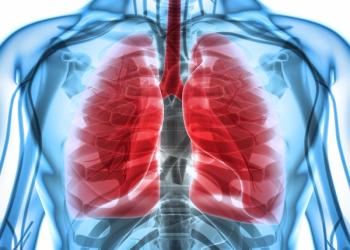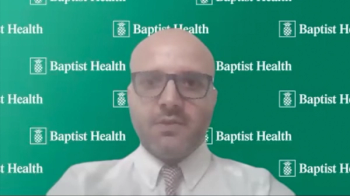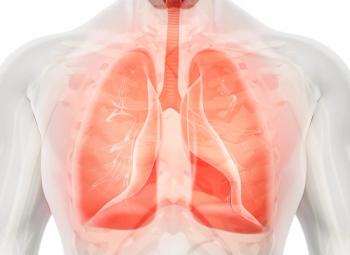
Oncology NEWS International
- Oncology NEWS International Vol 15 No 6
- Volume 15
- Issue 6
NCCN Reveals New Venous Thromboembolism Guideline
"Cancer increases the risk of venous thromboembolism (VTE) by four- to sevenfold, and is a precipitating factor in almost 20% of VTEs," Michael B. Streiff, MD, said at the 11th Annual Conference of the National Comprehensive Cancer Network (NCCN).
HOLLYWOOD, FL"Cancer increases the risk of venous thromboembolism (VTE) by four- to sevenfold, and is a precipitating factor in almost 20% of VTEs," Michael B. Streiff, MD, said at the 11th Annual Conference of the National Comprehensive Cancer Network (NCCN). In a survey of 3,891 respondents, he said, Kakkar et al found that 52% of surgical oncology patients received VTE prophylaxis, and only 5% of medical oncology patients (Oncologist 8:381-388, 2003). "We're not doing the job we should be doing," said Dr. Streiff, of the Sidney Kimmel Cancer Center, Johns Hopkins Medical Institutions. Dr. Streiff and Lawrence D. Wagman, MD, of City of Hope Cancer Center, discussed the NCCN response to this problem, a new NCCN Venous Thromboembolic Disease clinical care guideline. Dr. Wagman chaired the VTE Guideline Committee.
Several strategies have been successful in reducing rates of VTE. Kucher et al (N Engl J Med 352:969-977, 2005) found that a simple computer alert system reminding physicians that a specific patient should be considered for prophylaxis succeeded in cutting the rate of VTE in half in 90 days at one center. The new guideline includes a risk factor assessment for helping select patients for prophylaxis.
Dr. Streiff noted that low-molecular-weight-heparin (LMWH) appears to hold a slight advantage over unfractionated heparin (UFH) for prophylaxis of VTE, but pointed out that the confidence intervals in these studies overlap. "Choose whichever agent you like. The most important thing is to choose something," he said. Recommended anticoagulants include the LMWHs dalteparin (Fragmin), enoxaparin (Lovenox), and tinzaparin (Innohep), and the pentasaccharide fondaparinux (Arixtra), as well as UFH.
Timing also matters. The mean time to VTE after cancer surgery is 17 days, and risk continues for a considerable time. "Prophylaxis must be continued after the patient leaves the hospital," Dr. Streiff said. He advised clinicians to consider long periods of VTE prophylaxis, up to 30 days. He pointed out that Bergqvist et al (N Engl J Med 346:975-980, 2002) found a significant decrease in VTE in patients given anticoagulant prophylaxis for 30 days after surgery, and an even greater benefit with 90 days of anticoagulant prophylaxis.
Mechanical methods such as compression stockings should be considered when anticoagulants are contraindicated, but Dr. Streiff said that pharmacologic VTE prophylaxis is preferable. "Compliance with mechanical prophylaxis outside clinical trials is poor," he said.
Central venous catheter thrombosis is an obvious concern, since such catheters have historically been the site of up to one-quarter of clots in cancer patients, but Dr. Streiff said that the risk has decreased over time due to improvements in catheter materials and prophylaxis. He noted that the NCCN reviewers concluded that there are "inadequate data to suggest that all patients with central catheters should receive prophylaxis."
Renal insufficiency (creatinine clearance less than 30 mL/min) is a red flag, and Dr. Streiff said that LMWH should be used with caution in such patients and that fondaparinux probably should not be used in this setting due to its long half-life. Similarly, LMWH and fondaparinux should be avoided in patients with epidural catheters.
Pulmonary embolism (PE) mortality at 3 months is 15.3%, and Dr. Streiff stressed the importance of determining patients' PE risk before discharge. "This is often not done, and patients are being discharged at high risk for PE," he said. "Use a risk stratification score such as the Geneva Score. Patients with Geneva low-risk scores have only 2% adverse outcomes, while those with high-risk scores have 26% risk. Discharging a patient who is at high risk for PE can be disastrous."
Physicians should also be alert for development of heparin-induced thrombocytopenia in cancer patients who are given VTE prophylaxis. A typical case would have an unexplained platelet count fall of 50% after 4 or more days of UFH or LMWH. "You should not only discontinue heparin is this case, but provide an alternate antithrombosis treatment," he said. The guideline suggests discontinuing heparin, treating with a direct thrombin inhibitor such as lepirudin (Refludan) or argatroban, screening for asymptomatic DVT (which will occur in 50% of such patients), and beginning warfarin after platelet recovery.
The guideline includes sections on the diagnosis and treatment of deep vein thrombosis (DVT). "Consider DVT if there are any leg symptoms in a cancer patient," Dr. Streiff said. Work-up should include checking for any evidence of pain, swelling, or heaviness in the legs.
Dr. Wagman noted that venous ultrasound is the most effective modality for initial screening, and patients with negative or indeterminate venous ultrasound but with continued clinical suspicion of DVT should receive additional venous imaging by CT scan, MR venogram, or conventional venogram.
If the work-up indicates superficial thrombophlebitis, treatment is needed although not anticoagulation. "This can progress, however, and needs to be reevaluated," Dr. Wagman said. Treatment includes anti-inflammatory medications, warm compresses, and elevation.
Dr. Wagman noted that the guideline for DVT addresses treatment according to siteupper extremity; calf; superior vena cava, pelvis/iliac, femoral/popliteal; or catheter related.
One of the problems of immediate treatment of DVT, he said, is the perceived risk of bleeding, or relative contraindication (RC) to anticoagulant therapy. "The RC needs to be reevaluated repeatedly, over the entire course of cancer treatment," he said. Regarding catheter-related DVT, the guidelines recommend repeated attention to clinical necessity. "The central theme is, 'Is the catheter required?'" he said. "If you can remove the catheter, you remove the nidus of clot generation."
Dr. Streiff concluded: "VTE is a common cause of morbidity and mortality in cancer patients. Risk stratification and application of appropriate prophylaxis are essential. Patients should be risk stratified upon hospital admission. PE risk stratification should be incorporated into therapy. Maintain high clinical suspicion for heparin-induced thrombocytopenia. You can avoid much morbidity and mortality by following platelet counts."
Articles in this issue
over 19 years ago
Triple-Negative Cancers More Common in Young Black Ptsover 19 years ago
Artists Turn Flowers & Curves Into 'Forms' and 'Figures'over 19 years ago
Study to Examine Outcomes Disparities in Pediatric ALLover 19 years ago
Thalidomide Has 'Changed the Paradigm' in Myeloma Rxover 19 years ago
CA4P Gets Orphan Drug Statusover 19 years ago
Testicular Ca Survivors at Increased Risk for CV Eventsover 19 years ago
A Novel Brings a Cancer Research Laboratory to Lifeover 19 years ago
Lapatinib New Option for Metastatic HER2+ Breast Caover 19 years ago
FDA Approves Dacogen for Treating All MDS Subtypesover 19 years ago
Noninvasive Ablation Relieves Chronic Chest Wall PainNewsletter
Stay up to date on recent advances in the multidisciplinary approach to cancer.



















































































